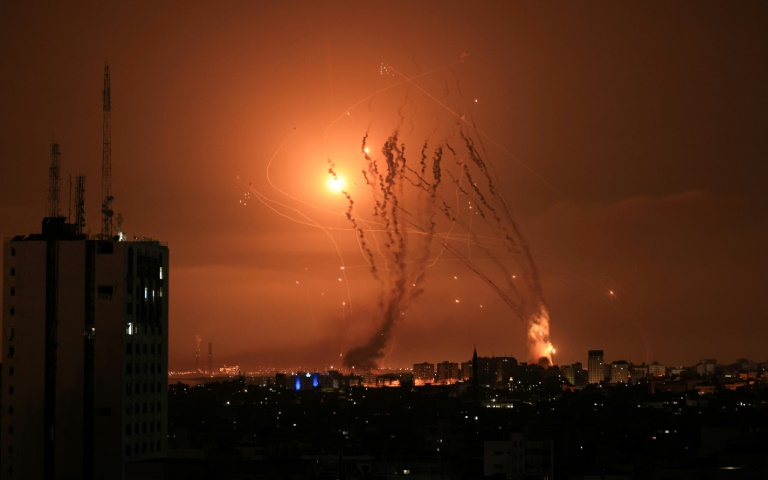Oil prices jump as Hamas attack on Israel fuels supply fears

The surprise attack by Hamas on Israel at the weekend has sparked fears of a wider conflict in the oil-rich Middle East, sending prices of the commodity surging
Hong Kong – Oil prices rallied while the dollar and yen advanced Monday after Hamas launched a shock attack on Israel at the weekend, sparking fresh concerns about tensions in the Middle East.
The crisis fanned concerns about supplies of crude from the region at a time when supply worries are already high owing to Saudi Arabia and Russia’s output cuts.
It has also renewed fears about the impact on inflation, with energy costs a key driver of spiking prices, giving a fresh headache to central banks as they try to ease up on interest rate hikes to avoid recessions.
The surprise attack and Israel’s declaration of war in response to it have left more than 1,000 dead and raised concerns that a potential broadening of the conflict could draw in the United States and Iran.
“Key for markets is whether the conflict remains contained or spreads to involve other regions, particularly Saudi Arabia,” said ANZ Group’s Brian Martin and Daniel Hynes.
“Initially at least, it seems markets will assume the situation will remain limited in scope, duration, and oil-price consequences. But higher volatility can be expected.”
Both main contracts surged more than five percent in early Asian business before easing back slightly.
However, SPI Asset Management’s Stephen Innes warned: “Historical analysis suggests that oil prices tend to experience sustained gains after the Middle East crises.
“Meanwhile, stocks tend to eventually recover and trend higher after an initial period of volatility. Safe-haven assets like gold and Treasurys, which initially see gains during such crises, tend to fade from their initial price spikes as the situation stabilises.
“But with Middle East analysts considering this to be a pivotal moment for Israel, the view looks incendiary in any current scenario.”
A decidedly risk-off mood also saw investors push into the safety of the dollar, which was up against the pound and euro, as well as the Australian and New Zealand dollars.
The yen, considered one of the safest currencies, strengthened against the greenback, though it still remains locked around 11-month lows.
Gold, another key haven, gained more than one percent.
Equity markets were mixed, with Shanghai dropping on its first day back after a week-long holiday as investors continue to fret over the stuttering Chinese economy.
There were also losses in Sydney, Singapore, Manila and Wellington, though Sydney and Jakarta eked out gains. Tokyo was closed for a holiday while a typhoon forced Hong Kong to shut for the morning session.
The tepid performance came despite a rally on Wall Street, where traders welcomed data showing a forecast-busting jump in new jobs but wage growth slowing.
The “Goldilocks” figures — neither too strong nor too weak — lifted optimism the world’s top economy can avoid a recession even as the Federal Reserve keeps rates elevated.
Still, there are worries the bank will hike one more time before the end of the year, with officials determined to bring inflation to heel and keep it at their two percent target.
– Key figures around 0230 GMT –
West Texas Intermediate: UP 4.7 percent at $86.67 per barrel
Brent North Sea crude: UP 4.5 percent at $88.35 per barrel
Shanghai – Composite: DOWN 0.7 percent at 3,090.14
Tokyo – Nikkei 225: Closed for a holiday
Hong Kong – Hang Seng Index: Closed in the morning
Euro/dollar: DOWN at $1.0562 from $1.0588 on Friday
Pound/dollar: DOWN at $1.2213 from $1.2234
Dollar/yen: DOWN at 149.14 yen from 149.30 yen
Euro/pound: DOWN at 86.48 pence from 86.52 pence
New York – Dow: UP 0.9 percent at 33,407.58 (close)
London – FTSE 100: UP 0.6 percent at 7,494.58 (close)
— Bloomberg News contributed to this story —
